Profiling Aged Care Facilities and Elderly QoL in KL and Selangor
VerifiedAdded on 2021/09/13
|26
|6772
|71
Report
AI Summary
This report provides a detailed analysis of aged care facilities and the quality of life of elderly residents in Kuala Lumpur and Selangor. It begins with a literature review, exploring global population ageing trends, particularly in Asia and Malaysia, and the impact of these trends on healthcare and social services. The report delves into elderly care trends, including financial aid, activity centers, home aid, and housing facilities, and addresses issues such as depression among the elderly. It examines personnel characteristics within the healthcare taskforce and reviews global accreditation standards. Furthermore, the report explores the Malaysian Private Aged Healthcare Facilities Services Act 2017 and provides an overview of the quality of life concepts, discussing the major correlates of quality of life and the relationship between depression, social support, and QOL. The report concludes with a comprehensive list of references.
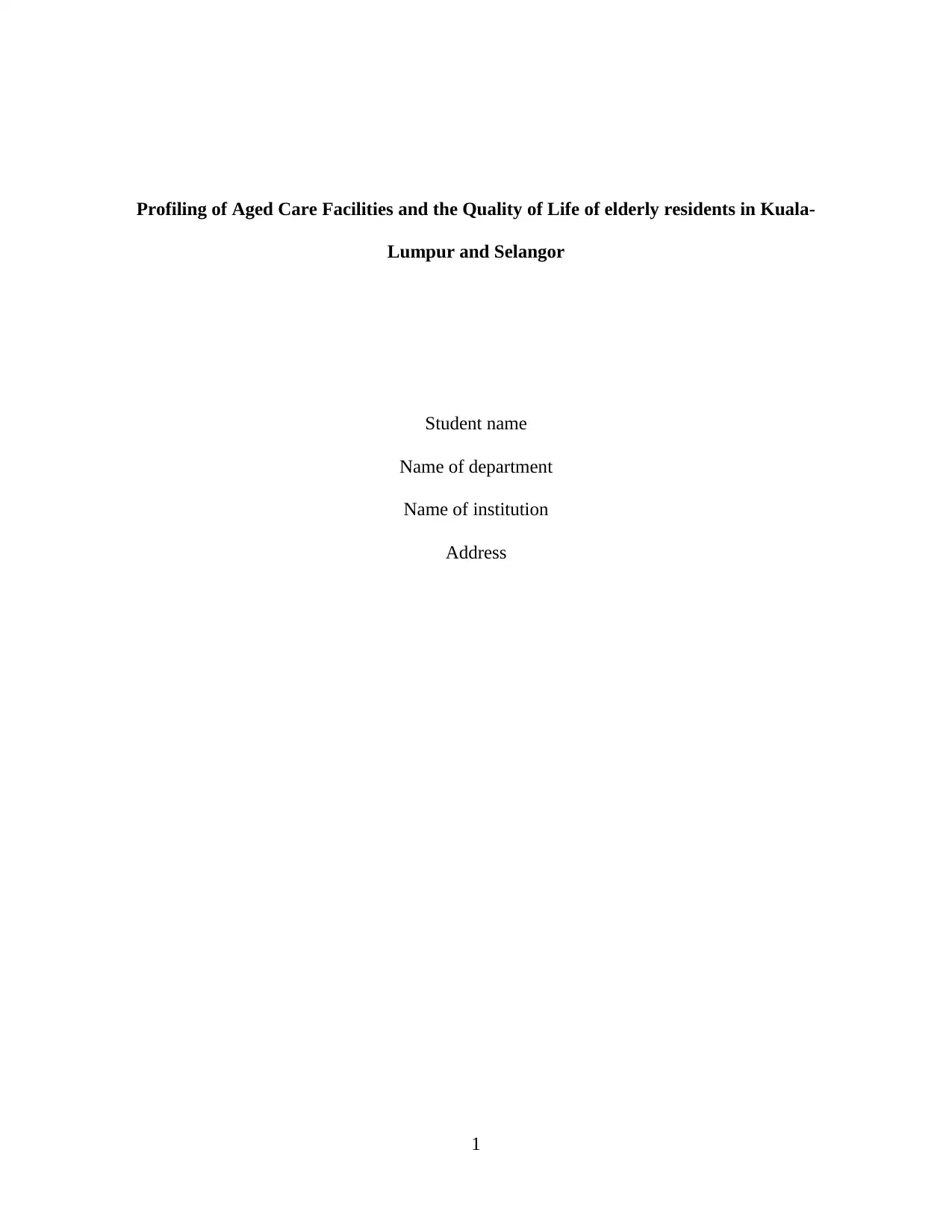
Profiling of Aged Care Facilities and the Quality of Life of elderly residents in Kuala-
Lumpur and Selangor
Student name
Name of department
Name of institution
Address
1
Lumpur and Selangor
Student name
Name of department
Name of institution
Address
1
Paraphrase This Document
Need a fresh take? Get an instant paraphrase of this document with our AI Paraphraser
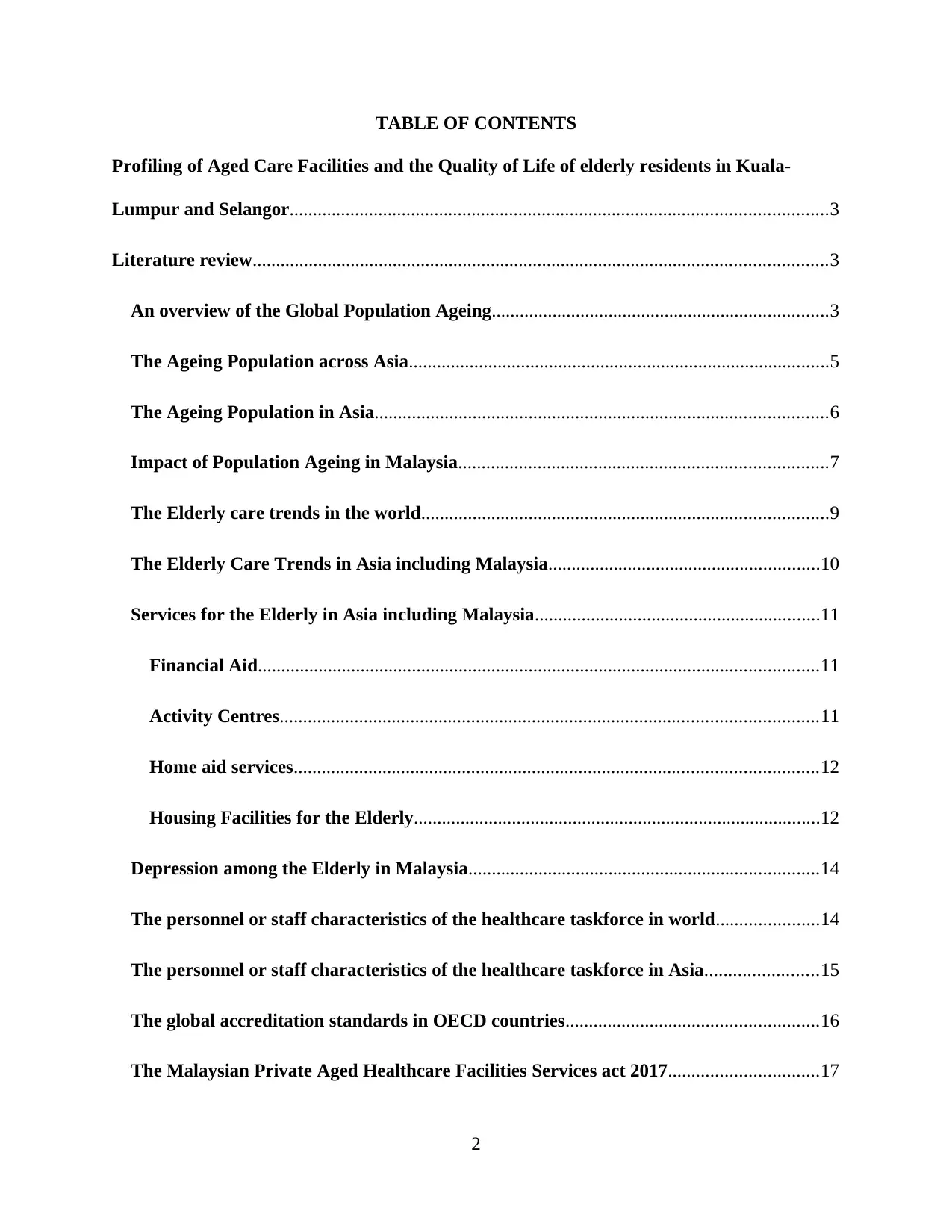
TABLE OF CONTENTS
Profiling of Aged Care Facilities and the Quality of Life of elderly residents in Kuala-
Lumpur and Selangor...................................................................................................................3
Literature review...........................................................................................................................3
An overview of the Global Population Ageing........................................................................3
The Ageing Population across Asia..........................................................................................5
The Ageing Population in Asia.................................................................................................6
Impact of Population Ageing in Malaysia...............................................................................7
The Elderly care trends in the world.......................................................................................9
The Elderly Care Trends in Asia including Malaysia..........................................................10
Services for the Elderly in Asia including Malaysia.............................................................11
Financial Aid........................................................................................................................11
Activity Centres...................................................................................................................11
Home aid services................................................................................................................12
Housing Facilities for the Elderly.......................................................................................12
Depression among the Elderly in Malaysia...........................................................................14
The personnel or staff characteristics of the healthcare taskforce in world......................14
The personnel or staff characteristics of the healthcare taskforce in Asia........................15
The global accreditation standards in OECD countries......................................................16
The Malaysian Private Aged Healthcare Facilities Services act 2017................................17
2
Profiling of Aged Care Facilities and the Quality of Life of elderly residents in Kuala-
Lumpur and Selangor...................................................................................................................3
Literature review...........................................................................................................................3
An overview of the Global Population Ageing........................................................................3
The Ageing Population across Asia..........................................................................................5
The Ageing Population in Asia.................................................................................................6
Impact of Population Ageing in Malaysia...............................................................................7
The Elderly care trends in the world.......................................................................................9
The Elderly Care Trends in Asia including Malaysia..........................................................10
Services for the Elderly in Asia including Malaysia.............................................................11
Financial Aid........................................................................................................................11
Activity Centres...................................................................................................................11
Home aid services................................................................................................................12
Housing Facilities for the Elderly.......................................................................................12
Depression among the Elderly in Malaysia...........................................................................14
The personnel or staff characteristics of the healthcare taskforce in world......................14
The personnel or staff characteristics of the healthcare taskforce in Asia........................15
The global accreditation standards in OECD countries......................................................16
The Malaysian Private Aged Healthcare Facilities Services act 2017................................17
2
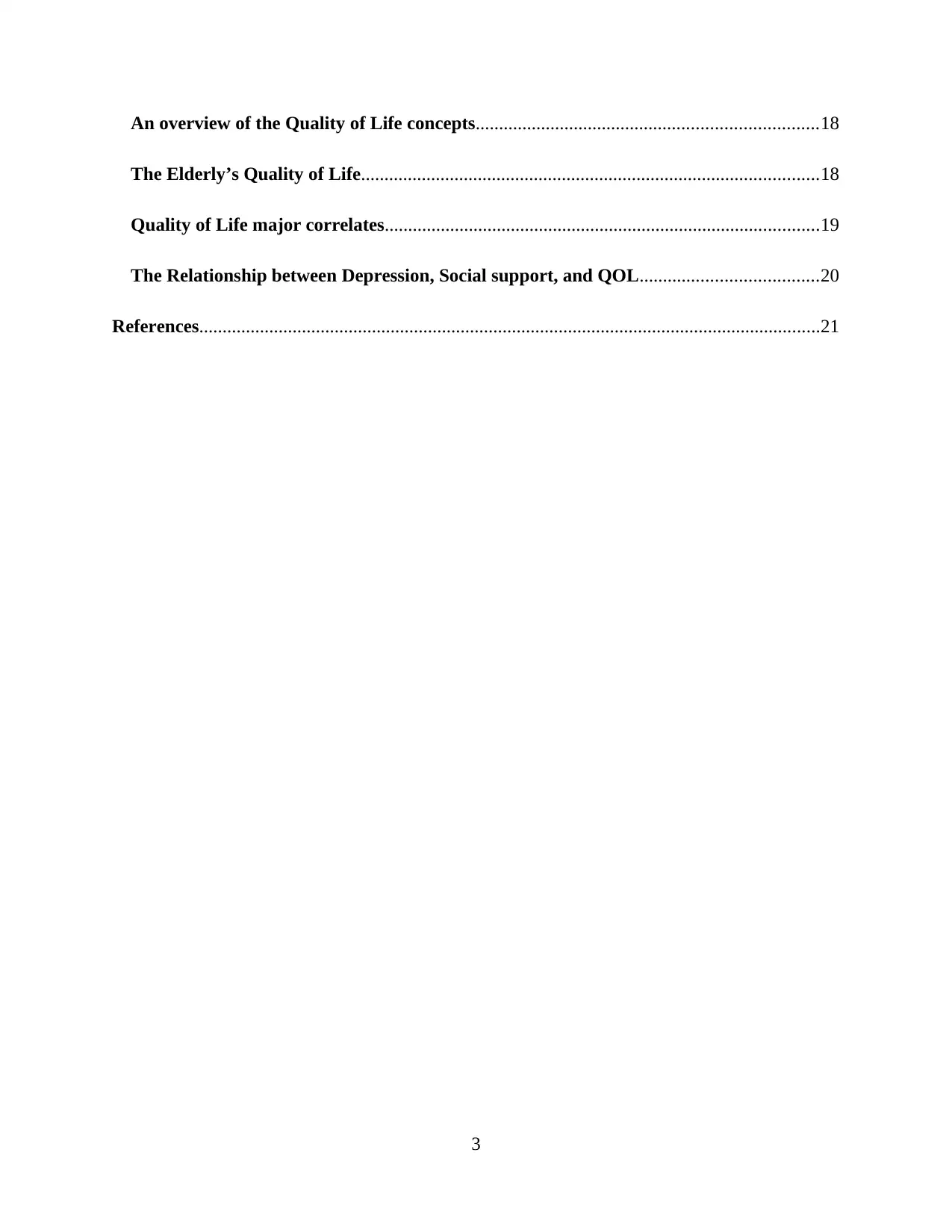
An overview of the Quality of Life concepts.........................................................................18
The Elderly’s Quality of Life..................................................................................................18
Quality of Life major correlates.............................................................................................19
The Relationship between Depression, Social support, and QOL......................................20
References.....................................................................................................................................21
3
The Elderly’s Quality of Life..................................................................................................18
Quality of Life major correlates.............................................................................................19
The Relationship between Depression, Social support, and QOL......................................20
References.....................................................................................................................................21
3
⊘ This is a preview!⊘
Do you want full access?
Subscribe today to unlock all pages.

Trusted by 1+ million students worldwide
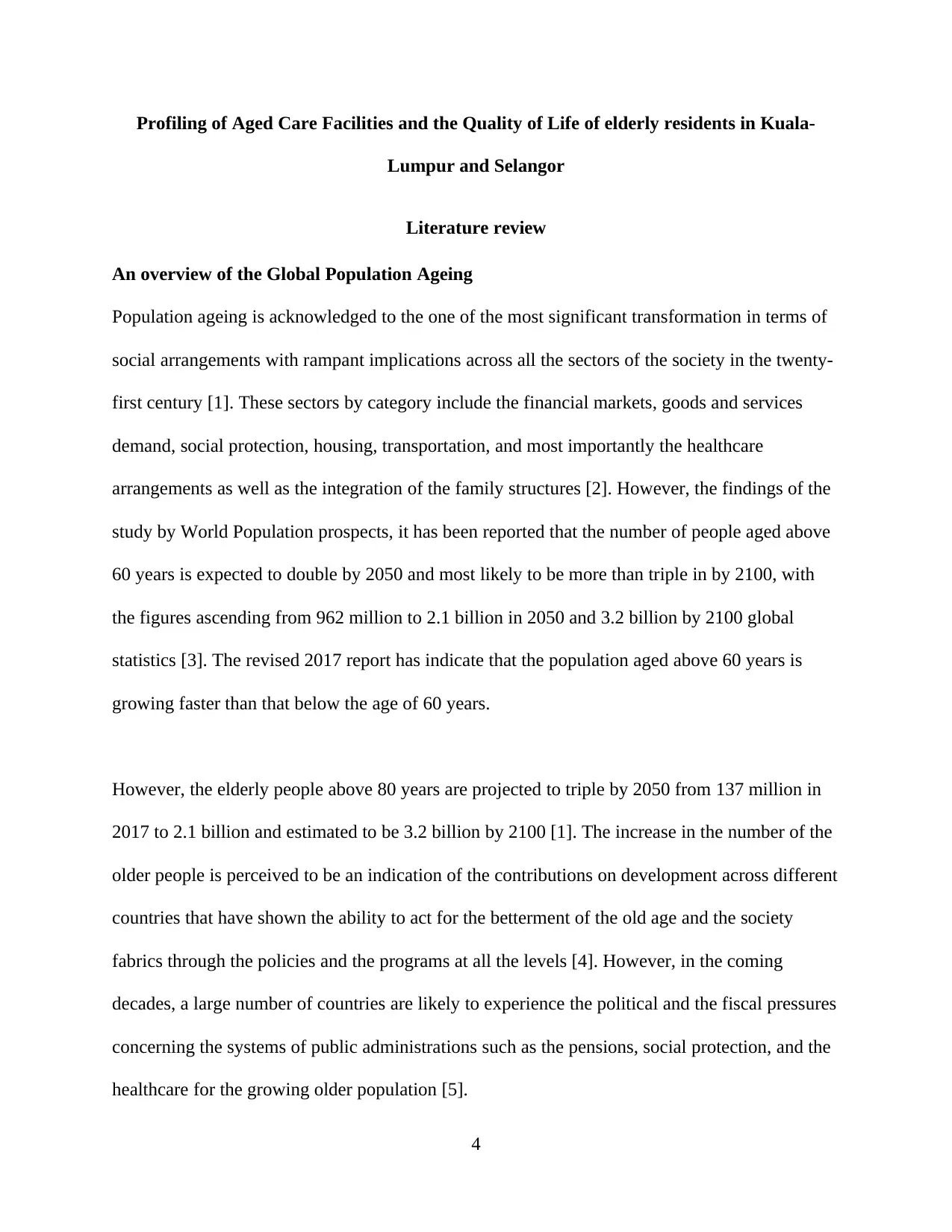
Profiling of Aged Care Facilities and the Quality of Life of elderly residents in Kuala-
Lumpur and Selangor
Literature review
An overview of the Global Population Ageing
Population ageing is acknowledged to the one of the most significant transformation in terms of
social arrangements with rampant implications across all the sectors of the society in the twenty-
first century [1]. These sectors by category include the financial markets, goods and services
demand, social protection, housing, transportation, and most importantly the healthcare
arrangements as well as the integration of the family structures [2]. However, the findings of the
study by World Population prospects, it has been reported that the number of people aged above
60 years is expected to double by 2050 and most likely to be more than triple in by 2100, with
the figures ascending from 962 million to 2.1 billion in 2050 and 3.2 billion by 2100 global
statistics [3]. The revised 2017 report has indicate that the population aged above 60 years is
growing faster than that below the age of 60 years.
However, the elderly people above 80 years are projected to triple by 2050 from 137 million in
2017 to 2.1 billion and estimated to be 3.2 billion by 2100 [1]. The increase in the number of the
older people is perceived to be an indication of the contributions on development across different
countries that have shown the ability to act for the betterment of the old age and the society
fabrics through the policies and the programs at all the levels [4]. However, in the coming
decades, a large number of countries are likely to experience the political and the fiscal pressures
concerning the systems of public administrations such as the pensions, social protection, and the
healthcare for the growing older population [5].
4
Lumpur and Selangor
Literature review
An overview of the Global Population Ageing
Population ageing is acknowledged to the one of the most significant transformation in terms of
social arrangements with rampant implications across all the sectors of the society in the twenty-
first century [1]. These sectors by category include the financial markets, goods and services
demand, social protection, housing, transportation, and most importantly the healthcare
arrangements as well as the integration of the family structures [2]. However, the findings of the
study by World Population prospects, it has been reported that the number of people aged above
60 years is expected to double by 2050 and most likely to be more than triple in by 2100, with
the figures ascending from 962 million to 2.1 billion in 2050 and 3.2 billion by 2100 global
statistics [3]. The revised 2017 report has indicate that the population aged above 60 years is
growing faster than that below the age of 60 years.
However, the elderly people above 80 years are projected to triple by 2050 from 137 million in
2017 to 2.1 billion and estimated to be 3.2 billion by 2100 [1]. The increase in the number of the
older people is perceived to be an indication of the contributions on development across different
countries that have shown the ability to act for the betterment of the old age and the society
fabrics through the policies and the programs at all the levels [4]. However, in the coming
decades, a large number of countries are likely to experience the political and the fiscal pressures
concerning the systems of public administrations such as the pensions, social protection, and the
healthcare for the growing older population [5].
4
Paraphrase This Document
Need a fresh take? Get an instant paraphrase of this document with our AI Paraphraser
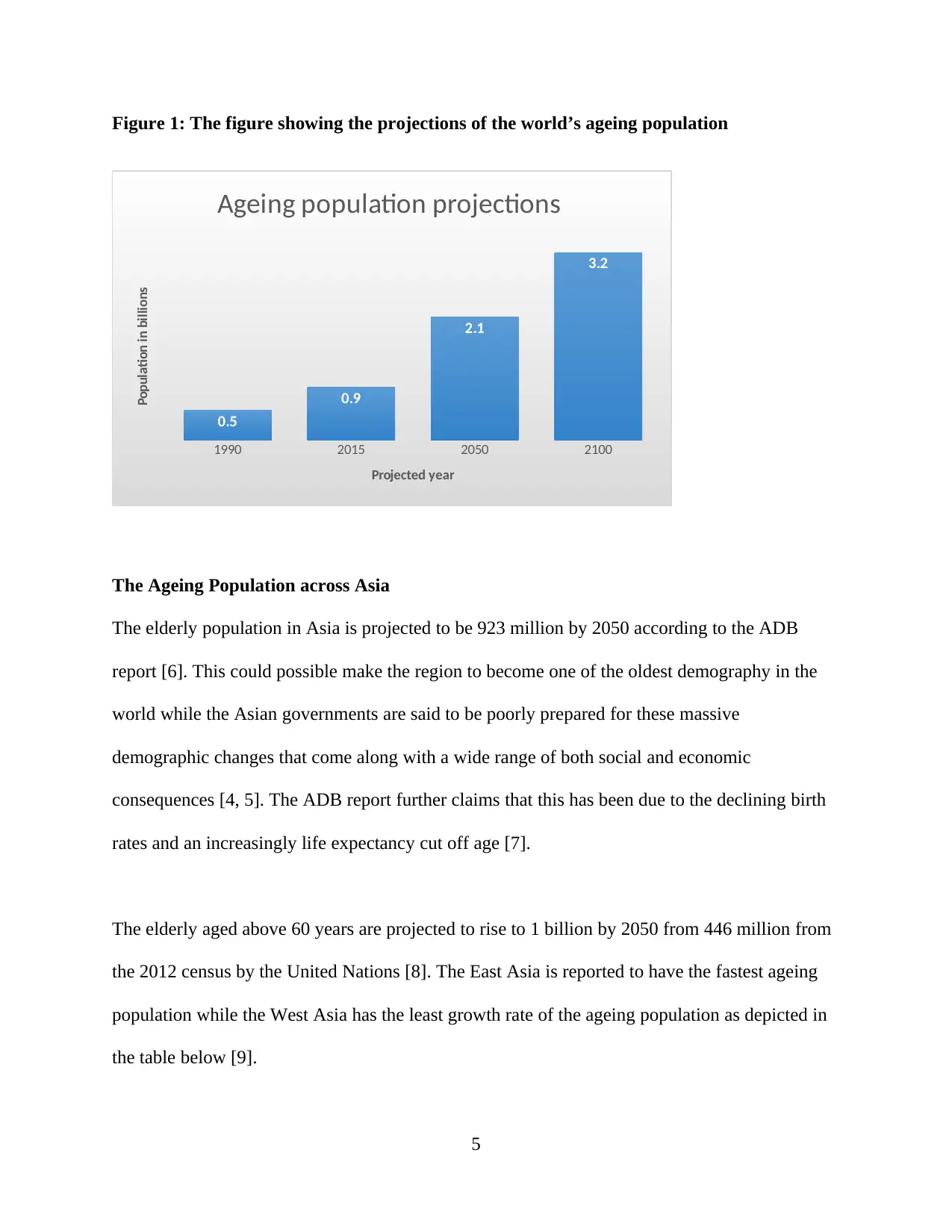
Figure 1: The figure showing the projections of the world’s ageing population
1990 2015 2050 2100
0.5
0.9
2.1
3.2
Ageing population projections
Projected year
Population in billions
The Ageing Population across Asia
The elderly population in Asia is projected to be 923 million by 2050 according to the ADB
report [6]. This could possible make the region to become one of the oldest demography in the
world while the Asian governments are said to be poorly prepared for these massive
demographic changes that come along with a wide range of both social and economic
consequences [4, 5]. The ADB report further claims that this has been due to the declining birth
rates and an increasingly life expectancy cut off age [7].
The elderly aged above 60 years are projected to rise to 1 billion by 2050 from 446 million from
the 2012 census by the United Nations [8]. The East Asia is reported to have the fastest ageing
population while the West Asia has the least growth rate of the ageing population as depicted in
the table below [9].
5
1990 2015 2050 2100
0.5
0.9
2.1
3.2
Ageing population projections
Projected year
Population in billions
The Ageing Population across Asia
The elderly population in Asia is projected to be 923 million by 2050 according to the ADB
report [6]. This could possible make the region to become one of the oldest demography in the
world while the Asian governments are said to be poorly prepared for these massive
demographic changes that come along with a wide range of both social and economic
consequences [4, 5]. The ADB report further claims that this has been due to the declining birth
rates and an increasingly life expectancy cut off age [7].
The elderly aged above 60 years are projected to rise to 1 billion by 2050 from 446 million from
the 2012 census by the United Nations [8]. The East Asia is reported to have the fastest ageing
population while the West Asia has the least growth rate of the ageing population as depicted in
the table below [9].
5
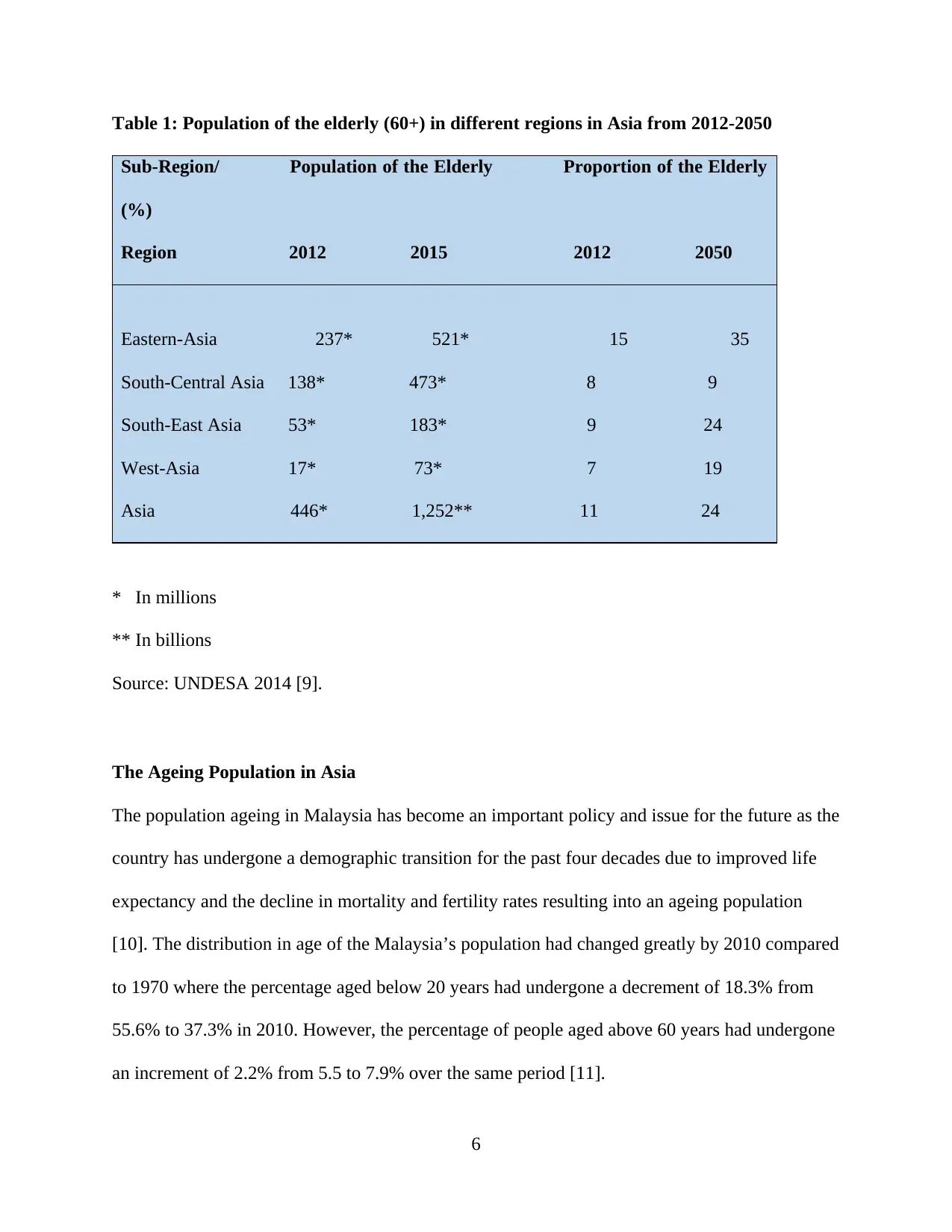
Table 1: Population of the elderly (60+) in different regions in Asia from 2012-2050
Sub-Region/ Population of the Elderly Proportion of the Elderly
(%)
Region 2012 2015 2012 2050
Eastern-Asia 237* 521* 15 35
South-Central Asia 138* 473* 8 9
South-East Asia 53* 183* 9 24
West-Asia 17* 73* 7 19
Asia 446* 1,252** 11 24
* In millions
** In billions
Source: UNDESA 2014 [9].
The Ageing Population in Asia
The population ageing in Malaysia has become an important policy and issue for the future as the
country has undergone a demographic transition for the past four decades due to improved life
expectancy and the decline in mortality and fertility rates resulting into an ageing population
[10]. The distribution in age of the Malaysia’s population had changed greatly by 2010 compared
to 1970 where the percentage aged below 20 years had undergone a decrement of 18.3% from
55.6% to 37.3% in 2010. However, the percentage of people aged above 60 years had undergone
an increment of 2.2% from 5.5 to 7.9% over the same period [11].
6
Sub-Region/ Population of the Elderly Proportion of the Elderly
(%)
Region 2012 2015 2012 2050
Eastern-Asia 237* 521* 15 35
South-Central Asia 138* 473* 8 9
South-East Asia 53* 183* 9 24
West-Asia 17* 73* 7 19
Asia 446* 1,252** 11 24
* In millions
** In billions
Source: UNDESA 2014 [9].
The Ageing Population in Asia
The population ageing in Malaysia has become an important policy and issue for the future as the
country has undergone a demographic transition for the past four decades due to improved life
expectancy and the decline in mortality and fertility rates resulting into an ageing population
[10]. The distribution in age of the Malaysia’s population had changed greatly by 2010 compared
to 1970 where the percentage aged below 20 years had undergone a decrement of 18.3% from
55.6% to 37.3% in 2010. However, the percentage of people aged above 60 years had undergone
an increment of 2.2% from 5.5 to 7.9% over the same period [11].
6
⊘ This is a preview!⊘
Do you want full access?
Subscribe today to unlock all pages.

Trusted by 1+ million students worldwide
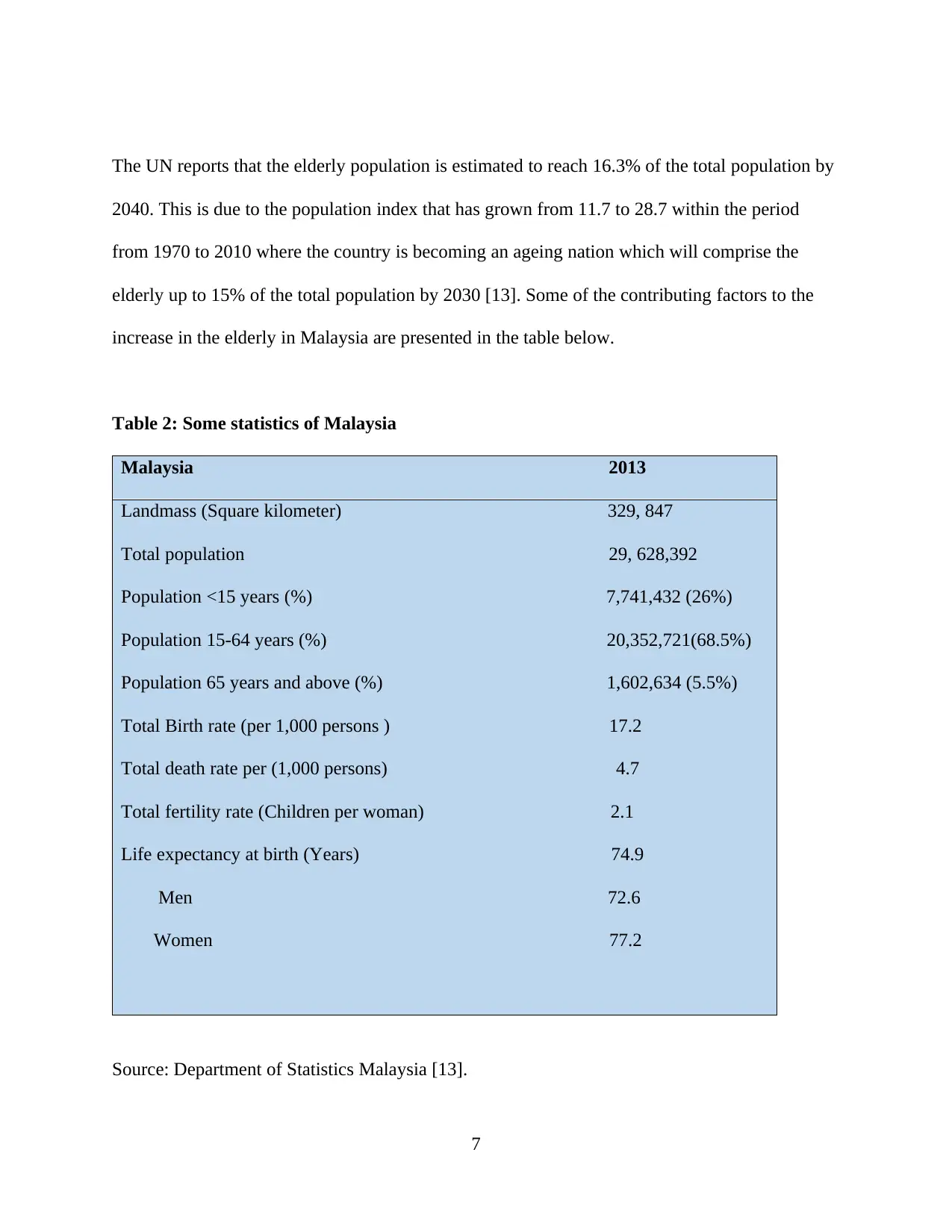
The UN reports that the elderly population is estimated to reach 16.3% of the total population by
2040. This is due to the population index that has grown from 11.7 to 28.7 within the period
from 1970 to 2010 where the country is becoming an ageing nation which will comprise the
elderly up to 15% of the total population by 2030 [13]. Some of the contributing factors to the
increase in the elderly in Malaysia are presented in the table below.
Table 2: Some statistics of Malaysia
Malaysia 2013
Landmass (Square kilometer) 329, 847
Total population 29, 628,392
Population <15 years (%) 7,741,432 (26%)
Population 15-64 years (%) 20,352,721(68.5%)
Population 65 years and above (%) 1,602,634 (5.5%)
Total Birth rate (per 1,000 persons ) 17.2
Total death rate per (1,000 persons) 4.7
Total fertility rate (Children per woman) 2.1
Life expectancy at birth (Years) 74.9
Men 72.6
Women 77.2
Source: Department of Statistics Malaysia [13].
7
2040. This is due to the population index that has grown from 11.7 to 28.7 within the period
from 1970 to 2010 where the country is becoming an ageing nation which will comprise the
elderly up to 15% of the total population by 2030 [13]. Some of the contributing factors to the
increase in the elderly in Malaysia are presented in the table below.
Table 2: Some statistics of Malaysia
Malaysia 2013
Landmass (Square kilometer) 329, 847
Total population 29, 628,392
Population <15 years (%) 7,741,432 (26%)
Population 15-64 years (%) 20,352,721(68.5%)
Population 65 years and above (%) 1,602,634 (5.5%)
Total Birth rate (per 1,000 persons ) 17.2
Total death rate per (1,000 persons) 4.7
Total fertility rate (Children per woman) 2.1
Life expectancy at birth (Years) 74.9
Men 72.6
Women 77.2
Source: Department of Statistics Malaysia [13].
7
Paraphrase This Document
Need a fresh take? Get an instant paraphrase of this document with our AI Paraphraser
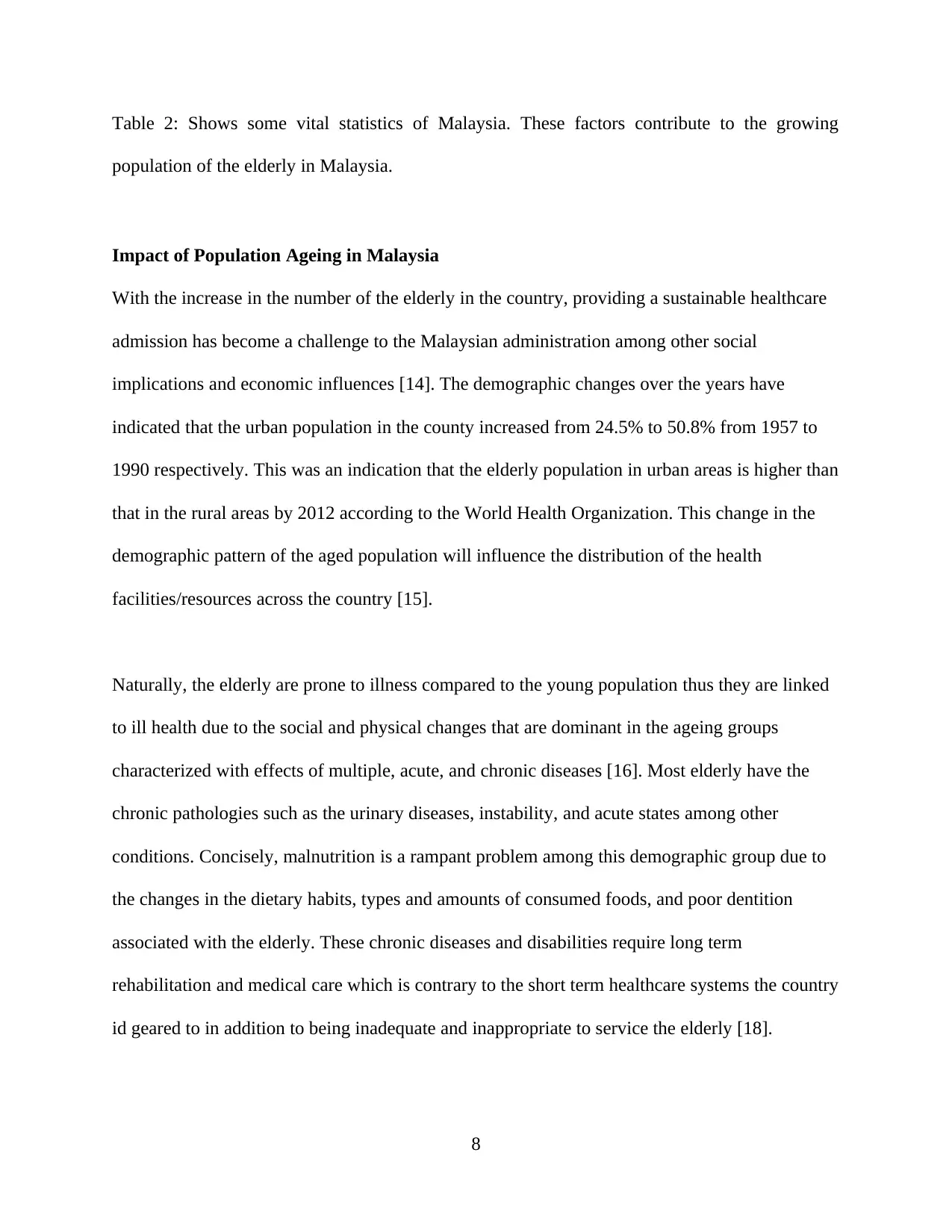
Table 2: Shows some vital statistics of Malaysia. These factors contribute to the growing
population of the elderly in Malaysia.
Impact of Population Ageing in Malaysia
With the increase in the number of the elderly in the country, providing a sustainable healthcare
admission has become a challenge to the Malaysian administration among other social
implications and economic influences [14]. The demographic changes over the years have
indicated that the urban population in the county increased from 24.5% to 50.8% from 1957 to
1990 respectively. This was an indication that the elderly population in urban areas is higher than
that in the rural areas by 2012 according to the World Health Organization. This change in the
demographic pattern of the aged population will influence the distribution of the health
facilities/resources across the country [15].
Naturally, the elderly are prone to illness compared to the young population thus they are linked
to ill health due to the social and physical changes that are dominant in the ageing groups
characterized with effects of multiple, acute, and chronic diseases [16]. Most elderly have the
chronic pathologies such as the urinary diseases, instability, and acute states among other
conditions. Concisely, malnutrition is a rampant problem among this demographic group due to
the changes in the dietary habits, types and amounts of consumed foods, and poor dentition
associated with the elderly. These chronic diseases and disabilities require long term
rehabilitation and medical care which is contrary to the short term healthcare systems the country
id geared to in addition to being inadequate and inappropriate to service the elderly [18].
8
population of the elderly in Malaysia.
Impact of Population Ageing in Malaysia
With the increase in the number of the elderly in the country, providing a sustainable healthcare
admission has become a challenge to the Malaysian administration among other social
implications and economic influences [14]. The demographic changes over the years have
indicated that the urban population in the county increased from 24.5% to 50.8% from 1957 to
1990 respectively. This was an indication that the elderly population in urban areas is higher than
that in the rural areas by 2012 according to the World Health Organization. This change in the
demographic pattern of the aged population will influence the distribution of the health
facilities/resources across the country [15].
Naturally, the elderly are prone to illness compared to the young population thus they are linked
to ill health due to the social and physical changes that are dominant in the ageing groups
characterized with effects of multiple, acute, and chronic diseases [16]. Most elderly have the
chronic pathologies such as the urinary diseases, instability, and acute states among other
conditions. Concisely, malnutrition is a rampant problem among this demographic group due to
the changes in the dietary habits, types and amounts of consumed foods, and poor dentition
associated with the elderly. These chronic diseases and disabilities require long term
rehabilitation and medical care which is contrary to the short term healthcare systems the country
id geared to in addition to being inadequate and inappropriate to service the elderly [18].
8
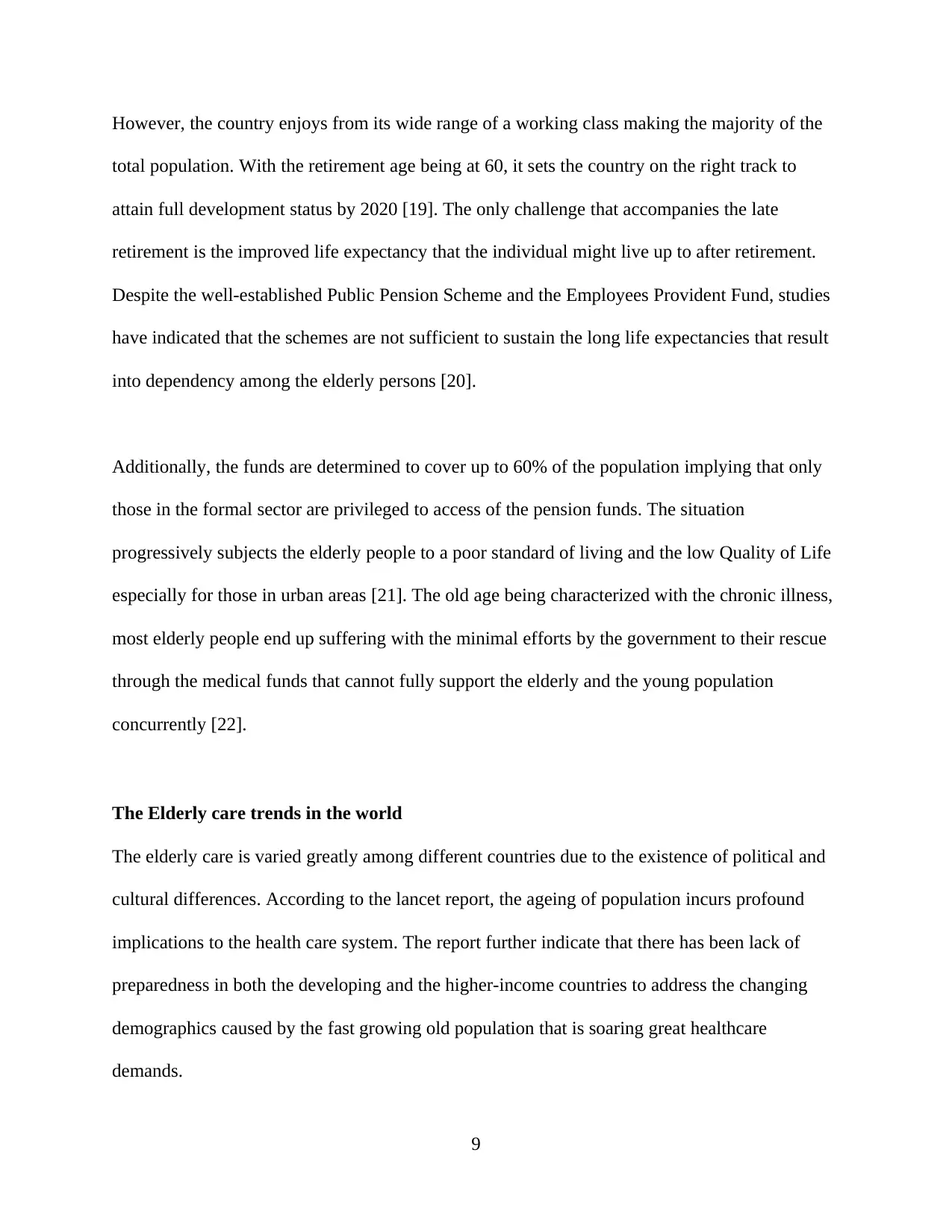
However, the country enjoys from its wide range of a working class making the majority of the
total population. With the retirement age being at 60, it sets the country on the right track to
attain full development status by 2020 [19]. The only challenge that accompanies the late
retirement is the improved life expectancy that the individual might live up to after retirement.
Despite the well-established Public Pension Scheme and the Employees Provident Fund, studies
have indicated that the schemes are not sufficient to sustain the long life expectancies that result
into dependency among the elderly persons [20].
Additionally, the funds are determined to cover up to 60% of the population implying that only
those in the formal sector are privileged to access of the pension funds. The situation
progressively subjects the elderly people to a poor standard of living and the low Quality of Life
especially for those in urban areas [21]. The old age being characterized with the chronic illness,
most elderly people end up suffering with the minimal efforts by the government to their rescue
through the medical funds that cannot fully support the elderly and the young population
concurrently [22].
The Elderly care trends in the world
The elderly care is varied greatly among different countries due to the existence of political and
cultural differences. According to the lancet report, the ageing of population incurs profound
implications to the health care system. The report further indicate that there has been lack of
preparedness in both the developing and the higher-income countries to address the changing
demographics caused by the fast growing old population that is soaring great healthcare
demands.
9
total population. With the retirement age being at 60, it sets the country on the right track to
attain full development status by 2020 [19]. The only challenge that accompanies the late
retirement is the improved life expectancy that the individual might live up to after retirement.
Despite the well-established Public Pension Scheme and the Employees Provident Fund, studies
have indicated that the schemes are not sufficient to sustain the long life expectancies that result
into dependency among the elderly persons [20].
Additionally, the funds are determined to cover up to 60% of the population implying that only
those in the formal sector are privileged to access of the pension funds. The situation
progressively subjects the elderly people to a poor standard of living and the low Quality of Life
especially for those in urban areas [21]. The old age being characterized with the chronic illness,
most elderly people end up suffering with the minimal efforts by the government to their rescue
through the medical funds that cannot fully support the elderly and the young population
concurrently [22].
The Elderly care trends in the world
The elderly care is varied greatly among different countries due to the existence of political and
cultural differences. According to the lancet report, the ageing of population incurs profound
implications to the health care system. The report further indicate that there has been lack of
preparedness in both the developing and the higher-income countries to address the changing
demographics caused by the fast growing old population that is soaring great healthcare
demands.
9
⊘ This is a preview!⊘
Do you want full access?
Subscribe today to unlock all pages.

Trusted by 1+ million students worldwide
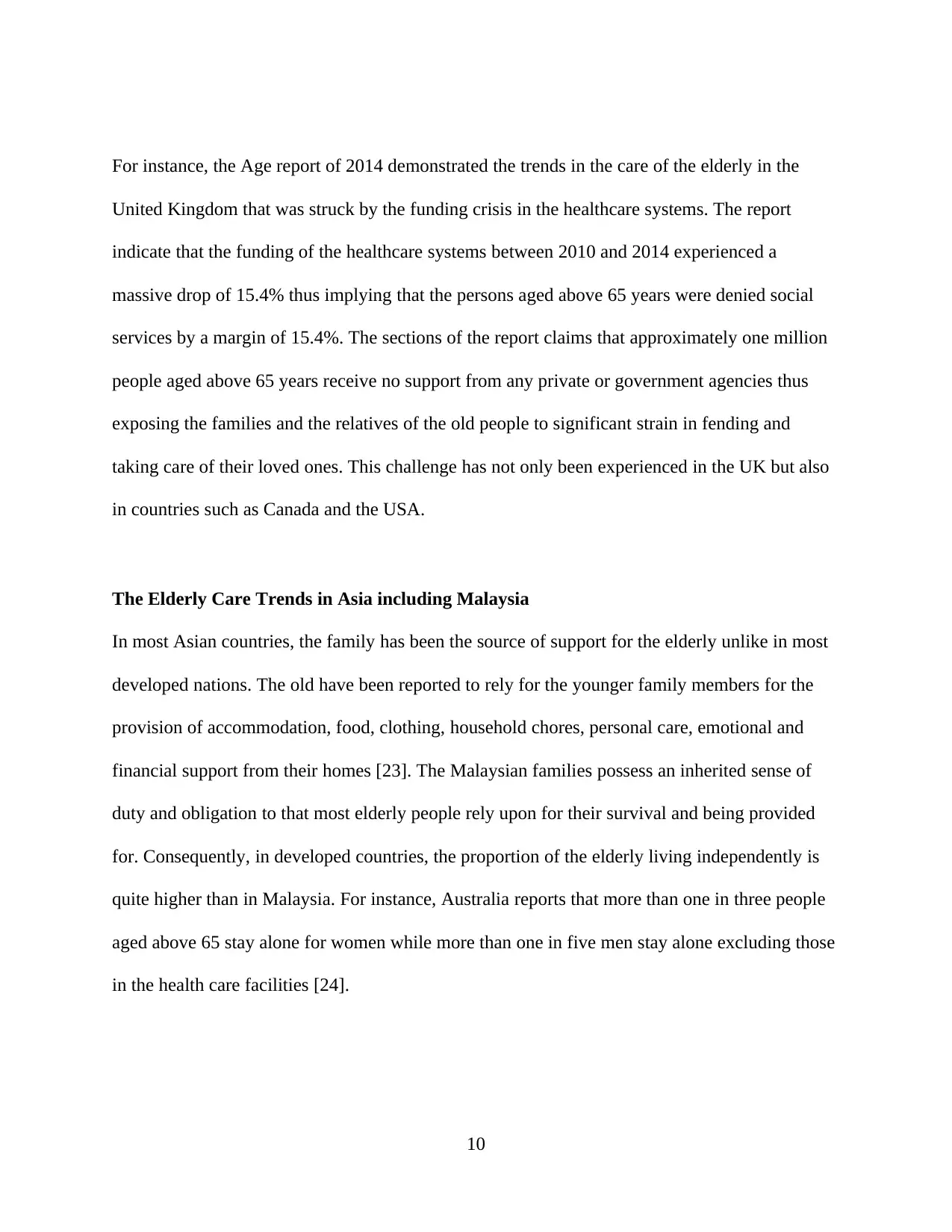
For instance, the Age report of 2014 demonstrated the trends in the care of the elderly in the
United Kingdom that was struck by the funding crisis in the healthcare systems. The report
indicate that the funding of the healthcare systems between 2010 and 2014 experienced a
massive drop of 15.4% thus implying that the persons aged above 65 years were denied social
services by a margin of 15.4%. The sections of the report claims that approximately one million
people aged above 65 years receive no support from any private or government agencies thus
exposing the families and the relatives of the old people to significant strain in fending and
taking care of their loved ones. This challenge has not only been experienced in the UK but also
in countries such as Canada and the USA.
The Elderly Care Trends in Asia including Malaysia
In most Asian countries, the family has been the source of support for the elderly unlike in most
developed nations. The old have been reported to rely for the younger family members for the
provision of accommodation, food, clothing, household chores, personal care, emotional and
financial support from their homes [23]. The Malaysian families possess an inherited sense of
duty and obligation to that most elderly people rely upon for their survival and being provided
for. Consequently, in developed countries, the proportion of the elderly living independently is
quite higher than in Malaysia. For instance, Australia reports that more than one in three people
aged above 65 stay alone for women while more than one in five men stay alone excluding those
in the health care facilities [24].
10
United Kingdom that was struck by the funding crisis in the healthcare systems. The report
indicate that the funding of the healthcare systems between 2010 and 2014 experienced a
massive drop of 15.4% thus implying that the persons aged above 65 years were denied social
services by a margin of 15.4%. The sections of the report claims that approximately one million
people aged above 65 years receive no support from any private or government agencies thus
exposing the families and the relatives of the old people to significant strain in fending and
taking care of their loved ones. This challenge has not only been experienced in the UK but also
in countries such as Canada and the USA.
The Elderly Care Trends in Asia including Malaysia
In most Asian countries, the family has been the source of support for the elderly unlike in most
developed nations. The old have been reported to rely for the younger family members for the
provision of accommodation, food, clothing, household chores, personal care, emotional and
financial support from their homes [23]. The Malaysian families possess an inherited sense of
duty and obligation to that most elderly people rely upon for their survival and being provided
for. Consequently, in developed countries, the proportion of the elderly living independently is
quite higher than in Malaysia. For instance, Australia reports that more than one in three people
aged above 65 stay alone for women while more than one in five men stay alone excluding those
in the health care facilities [24].
10
Paraphrase This Document
Need a fresh take? Get an instant paraphrase of this document with our AI Paraphraser
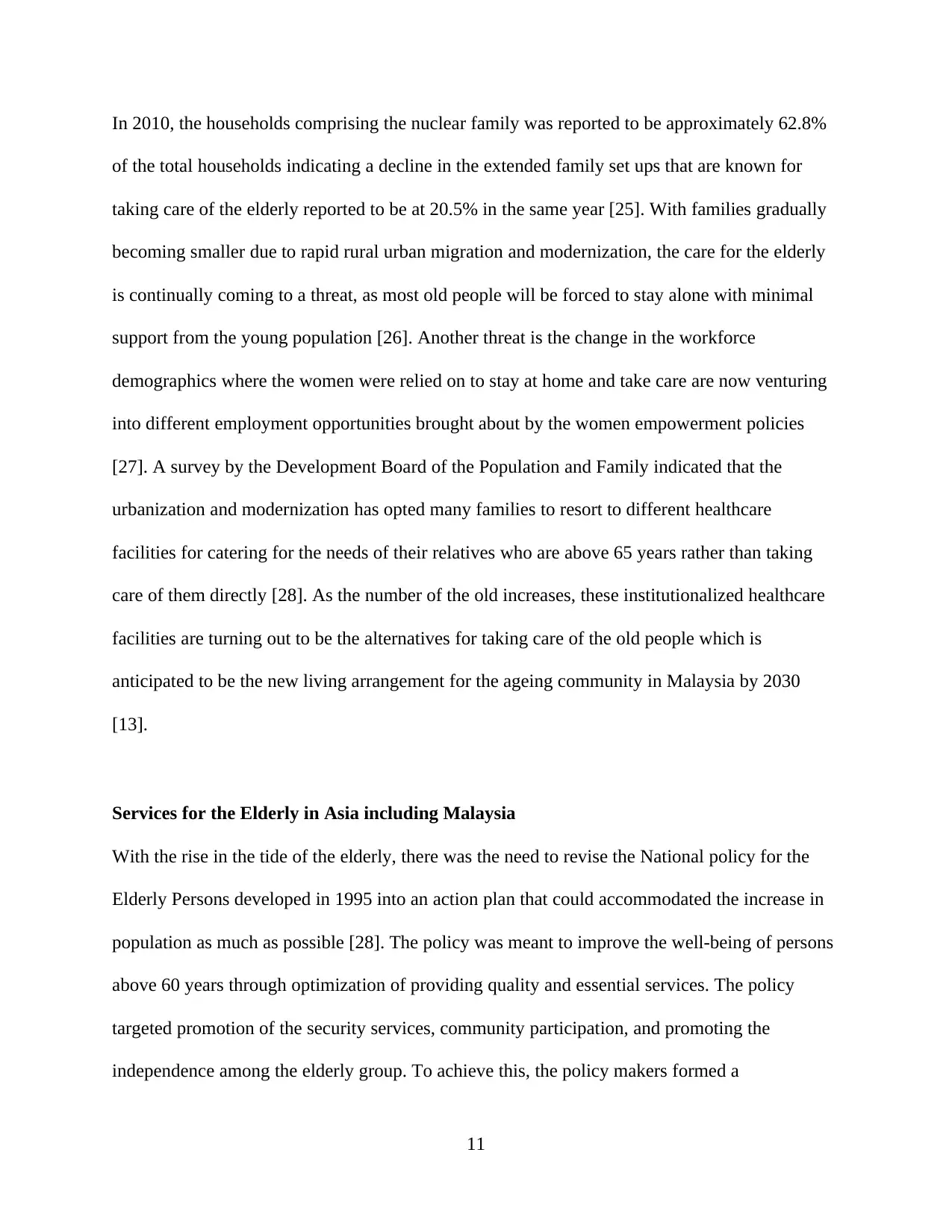
In 2010, the households comprising the nuclear family was reported to be approximately 62.8%
of the total households indicating a decline in the extended family set ups that are known for
taking care of the elderly reported to be at 20.5% in the same year [25]. With families gradually
becoming smaller due to rapid rural urban migration and modernization, the care for the elderly
is continually coming to a threat, as most old people will be forced to stay alone with minimal
support from the young population [26]. Another threat is the change in the workforce
demographics where the women were relied on to stay at home and take care are now venturing
into different employment opportunities brought about by the women empowerment policies
[27]. A survey by the Development Board of the Population and Family indicated that the
urbanization and modernization has opted many families to resort to different healthcare
facilities for catering for the needs of their relatives who are above 65 years rather than taking
care of them directly [28]. As the number of the old increases, these institutionalized healthcare
facilities are turning out to be the alternatives for taking care of the old people which is
anticipated to be the new living arrangement for the ageing community in Malaysia by 2030
[13].
Services for the Elderly in Asia including Malaysia
With the rise in the tide of the elderly, there was the need to revise the National policy for the
Elderly Persons developed in 1995 into an action plan that could accommodated the increase in
population as much as possible [28]. The policy was meant to improve the well-being of persons
above 60 years through optimization of providing quality and essential services. The policy
targeted promotion of the security services, community participation, and promoting the
independence among the elderly group. To achieve this, the policy makers formed a
11
of the total households indicating a decline in the extended family set ups that are known for
taking care of the elderly reported to be at 20.5% in the same year [25]. With families gradually
becoming smaller due to rapid rural urban migration and modernization, the care for the elderly
is continually coming to a threat, as most old people will be forced to stay alone with minimal
support from the young population [26]. Another threat is the change in the workforce
demographics where the women were relied on to stay at home and take care are now venturing
into different employment opportunities brought about by the women empowerment policies
[27]. A survey by the Development Board of the Population and Family indicated that the
urbanization and modernization has opted many families to resort to different healthcare
facilities for catering for the needs of their relatives who are above 65 years rather than taking
care of them directly [28]. As the number of the old increases, these institutionalized healthcare
facilities are turning out to be the alternatives for taking care of the old people which is
anticipated to be the new living arrangement for the ageing community in Malaysia by 2030
[13].
Services for the Elderly in Asia including Malaysia
With the rise in the tide of the elderly, there was the need to revise the National policy for the
Elderly Persons developed in 1995 into an action plan that could accommodated the increase in
population as much as possible [28]. The policy was meant to improve the well-being of persons
above 60 years through optimization of providing quality and essential services. The policy
targeted promotion of the security services, community participation, and promoting the
independence among the elderly group. To achieve this, the policy makers formed a
11
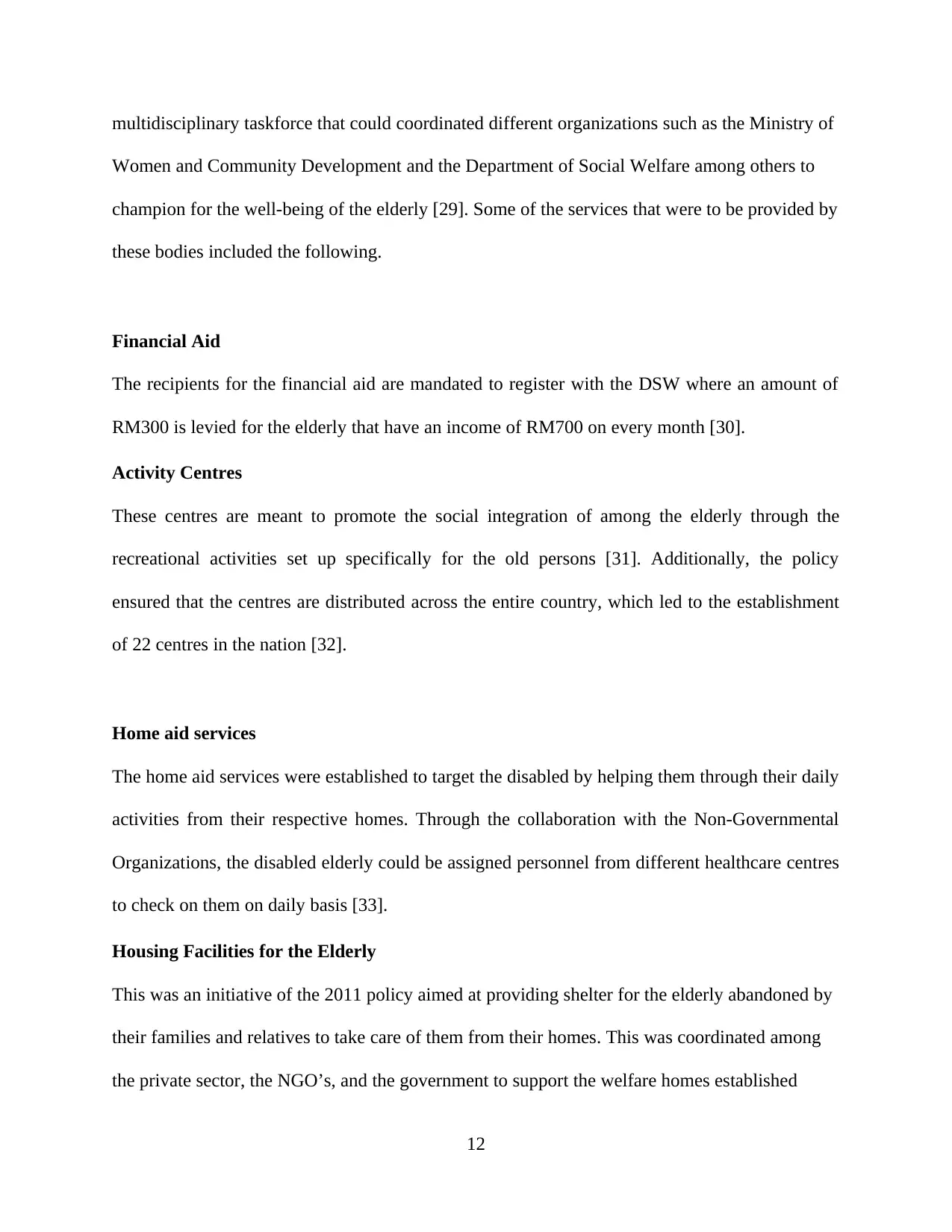
multidisciplinary taskforce that could coordinated different organizations such as the Ministry of
Women and Community Development and the Department of Social Welfare among others to
champion for the well-being of the elderly [29]. Some of the services that were to be provided by
these bodies included the following.
Financial Aid
The recipients for the financial aid are mandated to register with the DSW where an amount of
RM300 is levied for the elderly that have an income of RM700 on every month [30].
Activity Centres
These centres are meant to promote the social integration of among the elderly through the
recreational activities set up specifically for the old persons [31]. Additionally, the policy
ensured that the centres are distributed across the entire country, which led to the establishment
of 22 centres in the nation [32].
Home aid services
The home aid services were established to target the disabled by helping them through their daily
activities from their respective homes. Through the collaboration with the Non-Governmental
Organizations, the disabled elderly could be assigned personnel from different healthcare centres
to check on them on daily basis [33].
Housing Facilities for the Elderly
This was an initiative of the 2011 policy aimed at providing shelter for the elderly abandoned by
their families and relatives to take care of them from their homes. This was coordinated among
the private sector, the NGO’s, and the government to support the welfare homes established
12
Women and Community Development and the Department of Social Welfare among others to
champion for the well-being of the elderly [29]. Some of the services that were to be provided by
these bodies included the following.
Financial Aid
The recipients for the financial aid are mandated to register with the DSW where an amount of
RM300 is levied for the elderly that have an income of RM700 on every month [30].
Activity Centres
These centres are meant to promote the social integration of among the elderly through the
recreational activities set up specifically for the old persons [31]. Additionally, the policy
ensured that the centres are distributed across the entire country, which led to the establishment
of 22 centres in the nation [32].
Home aid services
The home aid services were established to target the disabled by helping them through their daily
activities from their respective homes. Through the collaboration with the Non-Governmental
Organizations, the disabled elderly could be assigned personnel from different healthcare centres
to check on them on daily basis [33].
Housing Facilities for the Elderly
This was an initiative of the 2011 policy aimed at providing shelter for the elderly abandoned by
their families and relatives to take care of them from their homes. This was coordinated among
the private sector, the NGO’s, and the government to support the welfare homes established
12
⊘ This is a preview!⊘
Do you want full access?
Subscribe today to unlock all pages.

Trusted by 1+ million students worldwide
1 out of 26
Related Documents
Your All-in-One AI-Powered Toolkit for Academic Success.
+13062052269
info@desklib.com
Available 24*7 on WhatsApp / Email
![[object Object]](/_next/static/media/star-bottom.7253800d.svg)
Unlock your academic potential
Copyright © 2020–2025 A2Z Services. All Rights Reserved. Developed and managed by ZUCOL.





